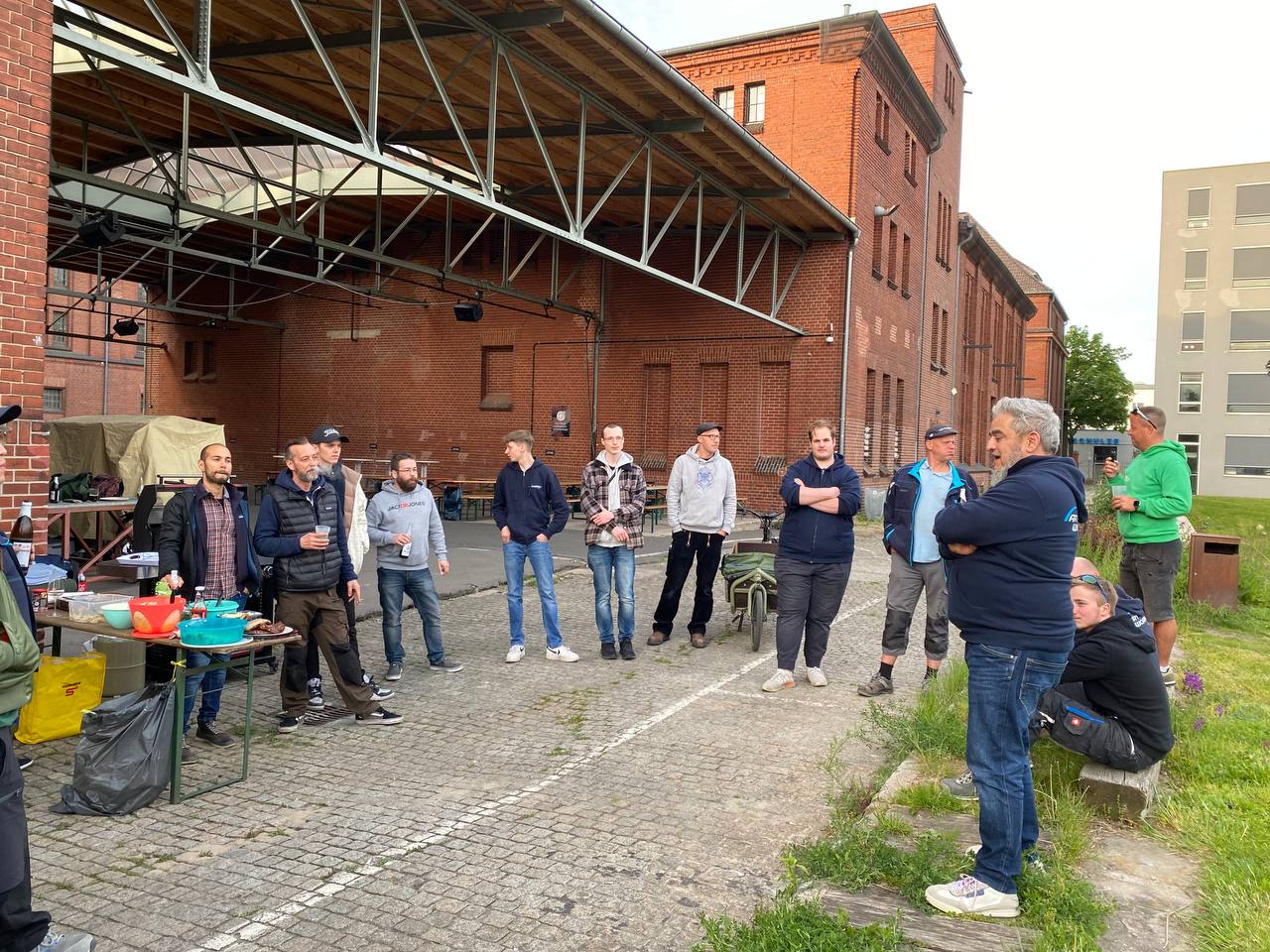The motto for this year’s training session was: “Let’s talk about it, because the art world is changing!” .
As always, we talk about the various customs procedures. I think we have now explained one or two things to many gallery employees. A lot of things have stuck in the meantime and there were almost no questions this year. We are proud of you! I think we’ll leave the topic to one side next year.
Our first guest speaker, Dr. Zilkens, was able to involve the participants in the topic of insurance in a free presentation in the form of a workshop. He cleared up some false assumptions. He also explained once again the importance of a freight forwarder and a carrier and their level of liability. The freight forwarder accepts the order and commissions other service providers to carry out work until the art arrives safely at its destination.
He does not necessarily have to do this himself. Other carriers can do this for him. However, the customer first of all holds the freight forwarder liable, who forwards the claim to the carrier he has booked.
If a gallery books everything itself and therefore acts as a freight forwarder, it has to take care of exactly that. The little that is saved is clearly lost in the event of damage when it comes to settlement or liability.
It is important to know that transportation is always covered by transport insurance. The freight forwarder is only liable with his transport liability insurance. However, this does not help the gallery. Unless the freight forwarder acts with gross negligence or intent and it can be proven. However, a good art forwarder, such as ARTSECO and some others, does not act with gross negligence or intent. Therefore, the claim for recourse against the freight forwarder then bounces off. This is where transport insurance comes in, that’s what it’s there for.
Our second guest speaker this year was Edwin Zijderfeld from Atmosfair GmbH.
First he introduced the NGO company, which is engaged in providing development aid in third world countries but also in reducing CO2 emissions in this world. They invest money, manpower and know-how in projects worldwide to educate cultures and lead them independently into a clean world. Countries that simply lack everything they need to implement environmentally friendly alternatives, cultures that have been exploited by the industrialized nations through our consumer behavior and live on the edge of subsistence.
In places where water from the tap, heat from the heating system or gas for cooking are not a matter of course, these NGOs work and set up projects to help the people there and not to make the same mistake as we do and plunder nature for profit, but to use it and build it up at the same time.
In order to finance these projects, the topic of “CO2 footprint compensation” has been launched. It is important to realize that transporting a box of art from Berlin to New York causes a certain amount of CO2 emissions. The business requires mobility, which cannot be avoided, but it can be offset.
Just briefly on the topics below:
WTW = Well-To-Wheel, i.e. from the ‘oil well’ to the delivery of the goods.
TTW = Tank-To-Wheel, i.e. from the filling station to the delivery of the goods.
In principle, the emissions should be recorded as completely as possible, i.e. including the upstream chain, i.e. including the emissions generated in order to provide the fuel. For flight emissions from people (our core business), we use the WTW values, which also corresponds to the standard in the industry.
For tonnage, the term ‘CO₂ equivalents’ is used. This covers all emissions that have an impact on the climate. This means that not only the pure CO₂ quantity is included, but also the other greenhouse gases produced during transportation (ozone, nitrogen oxides, sulphur oxides, etc.). In order to obtain a uniform basis for calculation, the climate impact of all individual gases is converted into CO₂ equivalents.
Provided we only consider air freight, we can determine the weight, distance and mode of transportation. From this we can calculate the CO2 emission in cbm, which is put in relation to the avoidance of new emission sins (deforestation, water pollution, CO2 emission caused by combustion). In the projects, CO2 emissions are avoided and by supporting these projects you can offset your transportation CO2 emissions. It sounds a bit as if you can go on like this as long as you keep easing your conscience and paying money. But the fact is that you can improve your input and output. I think this makes transportation and its consequences more visible for us and our customers. Art logistics is waking up from its Snow White slumber and starting to question itself and its environment. This includes means of transportation, transport packaging, crate construction, storage, transport routes, global trade fair business, exhibitions and much more.
We will soon start showing this to our customers per request so that they can decide for themselves whether they want to voluntarily pay compensation for their art transportation. We will manage the payments and bill the customer transparently in cycles with www.Atmosfair.com. This allows each gallery to see at the end of the year how much we have offset in total, but also how much the gallery has offset through us over the entire year and which projects have been supported.
We will keep you up to date and look forward to the next workshop with you
Your ARTSECO Team
You can see a few more photos on our Facebook page:
https://www.facebook.com/artsecoGmbH/











